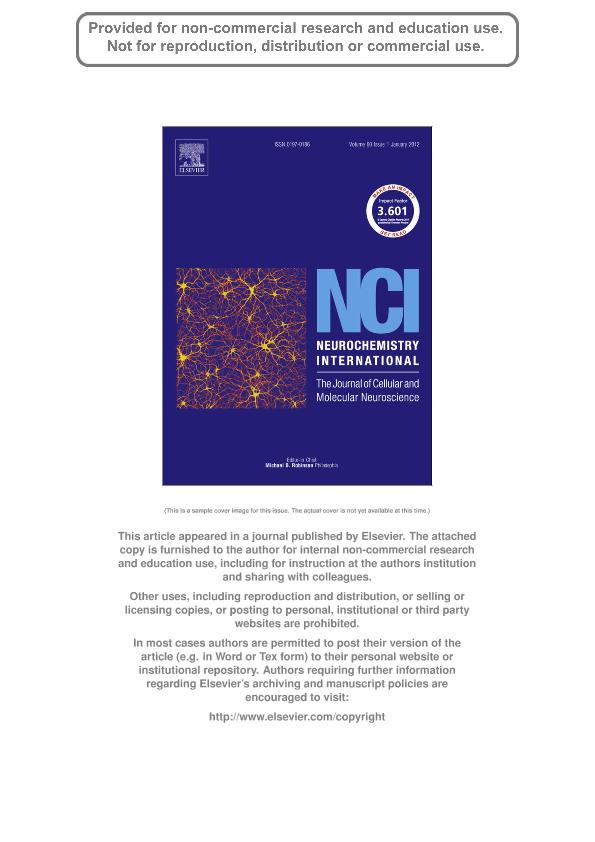Artículo
Effect of Angeli's salt on the glutamate/glutamine cycle activity and on glutamate excitotoxicity in the hamster retina
Fecha de publicación:
07/2012
Editorial:
Pergamon-Elsevier Science Ltd
Revista:
Neurochemistry International
ISSN:
0197-0186
Idioma:
Inglés
Tipo de recurso:
Artículo publicado
Clasificación temática:
Resumen
Glutamate is the main excitatory neurotransmitter in the retina, but it is toxic when present in excessive amounts. It is well known that NO is involved in glutamate excitotoxicity, but information regarding the possibility that NO-related species could reciprocally affect glutamate synaptic levels was not previously provided. The dependence of glutamatergic neurons upon glia via the glutamate/glutamine cycle to provide the precursor for neurotransmitter glutamate is well established. The aim of the present work was to comparatively analyze the effect of nitroxyl and NO on the retinal glutamate/glutamine cycle in vitro activity. For this purpose, Angeli's salt (AS) and diethylamine NONOate (DEA/NO) were used as nitroxyl and NO donor, respectively. AS and DEA/NO significantly decreased retinal l-glutamate uptake and glutamine synthetase activity, but only AS decreased l-glutamine influx. Dithiothreitol prevented all the effects of AS and DEA/NO. The intravitreal injection of DEA/NO (but not AS) or a supraphysiological concentration of glutamate induced retinal histological alterations. Although AS could increase glutamate synaptic concentration in vitro, the histological alterations induced by glutamate were abrogated by AS. These results suggest that nitroxyl could regulate the hamster retinal glutamatergic pathway by acting through differential mechanisms at pre- and postsynaptic level.
Palabras clave:
Excitotoxicity
,
Glutamate-Glutamine Cycle
,
Nitric Oxide
,
Nitroxyl
,
Retina
Archivos asociados
Licencia
Identificadores
Colecciones
Articulos(CEFYBO)
Articulos de CENTRO DE ESTUDIOS FARMACOLOGICOS Y BOTANICOS
Articulos de CENTRO DE ESTUDIOS FARMACOLOGICOS Y BOTANICOS
Citación
Knott, María Elena; Dorfman, Damián; Chianelli, Mónica Silvia; Saenz, Daniel Alberto; Effect of Angeli's salt on the glutamate/glutamine cycle activity and on glutamate excitotoxicity in the hamster retina; Pergamon-Elsevier Science Ltd; Neurochemistry International; 61; 1; 7-2012; 7-15
Compartir
Altmétricas




